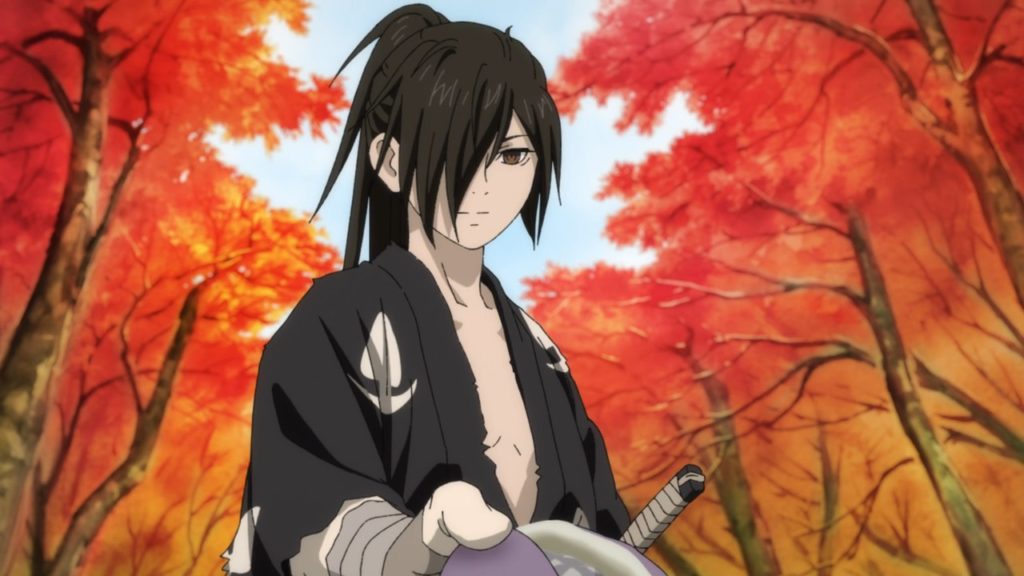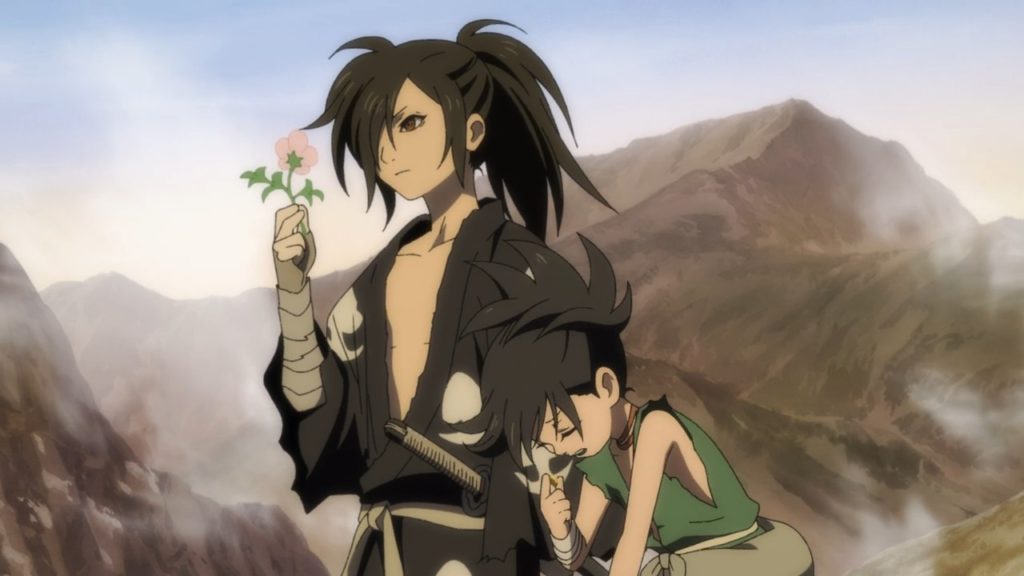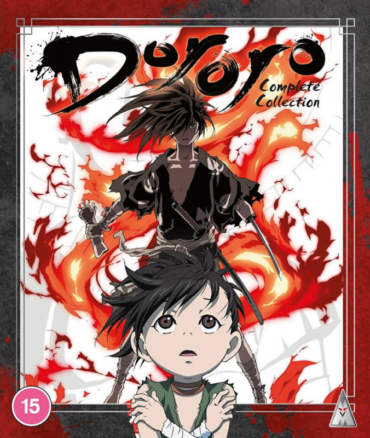Dororo Complete Collection
Dororo is an interesting tale. The original story was created by the ‘Father of Manga’ Osamu Tezuka, most famously known for Astro Boy, Princess Knight, and so many more. Dororo was a series that ran from 1967 to 1968 but then was cancelled, only to be properly concluded a year later in another magazine. There was also a black-and-white anime adaptation, starting in 1969, that began as a faithful adaptation of the manga but deviated into anime-original material in the last batch of episodes to give it a proper ending, due to the aforementioned cancellation. Also the original manga was considered too dark for the network, so the anime not only added a cute dog named Nota to the cast, but also had more upbeat music to make it more kid-friendly. Then, in 2019, MAPPA produced a brand-new anime adaptation of the original source material, now in the position of not only having the completed manga, but also learning from the strengths and weaknesses of the 60s anime. But does Dororo, as a story, work in the modern anime landscape?

Daigo Kagemitsu is a lord of a land that is dying; its crops, its people, and his power. So, he decides to enter the Hall of Hell, where twelve demon gods sleep, and makes a contract with them to take anything of his, as long as they give him power and make his land prosper. His wish is granted when his wife gives birth, because the child that’s born has no skin, eyes, voice, limbs or anything – and yet somehow still lives. Daigo, rejoicing in his new future, asks a midwife to dispose of said child. However, 16 years later, that child, now named Hyakkimaru, has grown up with prosthetic arms, legs, skin and more, and become a fearsome warrior who can tear down any demon. When Hyakkimaru saves a young orphan child named Dororo, and kills a particularly strong demon, he inexplicably regains his skin. Now with a new purpose, Dororo and Hyakkimaru travel the lands to find other demons that can help restore the body that Hyakkimaru was meant to be born with. Back in Daigo’s land, though, his crops start to show signs of decay…
The series has 24 episodes in total, which were shown from January to June in 2019, across two seasons of anime, and although they were told back-to-back, the two seasons do feel a bit different from each other, but with a theme running all the way through to tie them together. The first half of the series is more of a ‘monster of the week’ routine, with Hyakkimaru and Dororo going to a new town, forest, village, etc. Due to hearing of a demon nearby or someone in trouble, they discover not all is it seems, Hyakkimaru slays a demon, regains a body part, and they move on. But despite the formulaic nature, it’s the stronger half of the series. As a lead, Hyakkimaru has all the disadvantages that, in any other protagonist, would be a hindrance; with having no voice, virtually no facial expressions and no privy to his inner thoughts, but as a character he is still fascinating to watch. He looks cool, obviously, with samurai blades for arms and is able to slay giant monsters without blinking (literally) but it’s his unique perspective (not being able to speak, hear OR see) and for us watching him regain each one slowly is very interesting, and we feel for him. For example, if you have never heard anything in the first 16 years of life, and suddenly regain your hearing, that would be incredibly overwhelming. Dororo admittedly doesn’t get to stand out as much in the first half of the series, but Episode 9, where we learn of Dororo’s back story is heart-breaking, and makes a lot of Dororo’s behaviour and actions make sense, plus through Dororo we have an audience surrogate, someone to ask the questions, because being so young, Dororo isn’t going to know everything that is going on and this helps the audience to follow along as well.

The second half of the series does have a few one-off ‘monster of the week’ episodes, but it’s more a long-running arc that builds the tension and characters up to the final battle for Hyakkimaru’s final missing limbs. This half should have been the crowning moment, the best of the batch, but despite some interesting ideas there’s a few missteps. We start to get large gaps where Hyakkimaru defeats a demon and doesn’t regain a limb or something of his, and when he does, the effect it should have on Hyakkimaru himself is quickly managed to keep the plot moving, so it loses its emotional touch. Also, there are times where the series tries to be more light-hearted, but it doesn’t always land. Episode 19, where a goblin of sorts makes everyone behave strangely, feels like an OVA episode, a comical detour, rather than part of the full series. Then there’s the bit where a young man controls two large sharks and has them tow his boat across the sea and feeds them people – even his own arm. And yes, upon researching, I know this was also in the manga, but considering how grim, dark and serious the anime has been up to this point, this felt very silly in comparison. But what kept me going thoughout was the interesting exploration of the ideas of sacrifice and what it means to be human, which the series doesn’t just paint in black and white, nor does it give a clear-cut answer. For example, Daigo sacrificed his own son to make his land prosper, which was a horrible and selfish thing to do, however does it mean that the people he helped survive in his land and the quiet lives they lead deserve to suffer and have it ripped away, even though they had nothing to do with it? As for Hyakkimaru, it’s 100% wrong what happened to him, and he has an absolute right to want his body and senses back, but does that also mean he has the right to rip away the happiness of innocents? Or make his family suffer in turn? Is it worth regaining what he lost but potentially lose his humanity in the process? Whilst the writing ranges from engaging to sloppy, the ending overall does feel satisfying with the character growth and the story they tried to tell.
Tezuka Productions and MAPPA co-produced Dororo and the animation is for the most part, stellar. They updated the very 60s-character designs, whilst remaining faithful to the look in the manga, with a darker and more violent edge that the old anime lacked. The first half, like the story, had the strongest animation with a very stylized opening and ending animations, plus some well-choreographed action scenes and cool demon designs. The second half, however, noticeably goes down a peg with more still shots, inconsistent character designs and very plain animation for the opening especially, but it does come through for the finale and is able to keep up the pace with the action.
Yoshihiro Ike’s score fits the time period the anime is set in, with lots of ancient Japanese drums and wind instruments taking the lead, and even though it can be tempted to get out the guitar and such for the battle sequences, he keeps it intense but also period-appropriate. The English dub is also very good; despite the fact that the amount of lines Adam Gibbs who plays Hyakkimaru would fit onto one side of A4 paper, his performance delivers the right balance of stillness (when the character is first finding his voice) and emotional (as he grows as a person).
The Blu-ray collection contains all 24 episodes of the series, in Japanese and English dub, with on-disc extras included clean opening and ending, promos, and disc credits.
Dororo is based upon a classic, and whilst this series is quite different from the original manga, I can see it not only pleasing fans of the original story but also those who just want a good, action-heavy, dark fantasy to check out.



